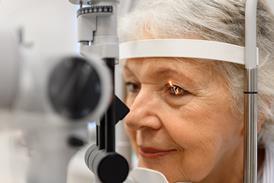If GP roles offered a less overwhelming workload and more enjoyable working environment, the capacity and contribution of existing GPs could be greater. By Jessica Arnold, working with Dr Agnes Marossy and Dr Gillian Kyei

A deeper understanding of what is happening in general practice
Rising to the challenge of a rapidly changing local primary care environment, Bromley Clinical Commissioning Group has invested a significant amount of time and energy into designing, executing and drawing game-changing recommendations through a “Primary Care Needs Assessment”.
Perhaps the most interesting findings from our intensive methodology of iterative practice and patient engagement and interrogation of clinical systems relate to practice workload and workforce, and the fractious relationships and entrenched mistrust between GP partners and locum GPs in many practices.
In response, we have developed a combined culture change and digital solution to improve GP relations and meet the common goal of better retention, productivity and enjoyment of what it means to be a general practitioner in the NHS today.
Enter GP partner
During our research, many GP partners and managerial practice staff felt that locum GPs make a limited contribution to their practice due to a combination of real and perceived unwillingness to do administrative work, patient follow up and home visits. Some practices felt that using locums is “zero sum”, fixing a short term capacity problem with patients often coming back to the surgery to see a more experienced GP at a later date.
Bromley’s research found frequent reports of GP partners feeling that locum GPs are demanding higher rates of pay and their own terms and conditions such as term-time only working schedules and refusal to do home visits
Perhaps particularly worryingly, some GP partners also felt that young locums, without consistent experience of working in a single general practice, accumulate less experience and learn how to manage more complex cohorts of patients and conditions at a slower rate. This was attributed to the casual locum GP not following up and monitoring patients to understand their evolving responses to treatment over time.
Therefore, locum GPs were seen as potentially providing less safe and a lesser quality of care for the most vulnerable patients.
Bromley’s research found frequent reports of GP partners feeling that locum GPs are demanding higher rates of pay and their own terms and conditions such as term-time only working schedules and refusal to do home visits.
This “sellers’ market” is propagating financial pressure on practices who are struggling with vacancies to pay higher salaries as well as a workforce strain on other staff to work longer hours, especially during school holidays.
Enter Locum GP
Locums reported a feeling of unfairness and unreasonable expectations by many GP practices that hire them; if the locum is needed to see patients, follow up results, make home visits, do prescriptions and so forth, they need to be booked for, and paid for, the adequate amount of time.
Similarly, attending a home visit after on-site patient consultations have been completed was not seen as reasonable because the locum may have another job, or childcare, or somewhere else to be at that time, and would often not be paid for the additional work.
Countering concerns about locums’ limited follow up of complex patients, locum GPs felt they often bring in a fresh perspective to patient problems as well as valuable clinical experience from working in different settings and practices with different patient demographics.
The versatility arising from their learned ability to adapt to variables of the clinical experience brings a depth to their clinical practice that could be lesser if entrenched in one practice for all of their working lives.
Drawing conclusions
One conclusion is that general practice needs to rethink the role of the GP and must challenge traditional perceptions of how a GP works in time and space. General practice has historically required GPs to be present on site during fixed sessions that broadly follow the same morning, afternoon and early evening pattern across GP practices.
To avoid tensions about what work is undertaken by locum GPs, pre-defined packages of work can be developed and negotiated between locum and practice
However, face to face appointments with patients is the only job function that requires a GP to be present on site. Telephone and online consultations, checking pathology results and a number of other functions can be conducted remotely, if the right technology and information governance safeguards are put into place.
This also means that, aside from when on-site patient appointments are booked, the GP can work at during evenings and weekends outside of the traditional schedule of sessions. By rethinking the time and space that a GP works in, there is the potential to attract a larger workforce to general practice.
Second, to avoid tensions about what work is undertaken by locum GPs, pre-defined packages of work can be developed and negotiated between locum and practice. This might take a “gold, silver and bronze” structure whereby different packages offer different combinations of face-to-face appointments, home visits and minutes of admin time.
Packages would be costed accordingly and although they could of course be flexed between parties to meet “on the day” needs, would provide a useful starting point to avoid disagreement and disappointment on either side.
Third, we concluded that a digital solution should be developed to bring together locums into a peer networked group – our vision for a Bromley “family” of locums. This would provide a “one stop shop” through which locum GPs can not only find work, but access local training and educational events and the peer networks that lead to work based friendships and the job satisfaction that can come from team working.
Moving towards conceptual, cultural and digital solutions
The narrative in recent years and in particular since the launch of the GP Forward View, has focused on GP recruitment and retention, but the capacity of GPs already working in the healthcare system is often forgotten. If GP roles offered a less overwhelming workload and more enjoyable working environment, the capacity and contribution of existing GPs could be greater.
How can doctors look after us if their professional and personal needs are not being looked after by the current system?
As GP recruitment efforts such as the international GP recruitment programme have failed and retention programmes such as GP returner scheme have had limited uptake, focusing on the capacity of existing GPs feels like a wise priority.
In Bromley, we are piloting an app that aims to deliver both a digital solution to the challenges identified by the Bromley Primary Care Needs Assessment. Perhaps more importantly though, our app will be a tool to facilitate challenge of the entrenched perceptions and cultures that have reduced the contribution of GPs or prevented them from working in general practice altogether.
The debate about whether the future of general practice will rely on GP partners, salaried GPs or locum GPs to deliver the NHS long-term plan becomes less important as we start to think about GPs more as a function within the community-based team than a pre-determined and rigidly defined job description.
It is not about debating the merits of GP partners’ versus locums’ approaches to providing care – patients want versatile GPs who are themselves mentally and emotionally healthy and satisfied with their work. This is crucial to good quality of care for patients; how can doctors look after us if their professional and personal needs are not being looked after by the current system?
































No comments yet